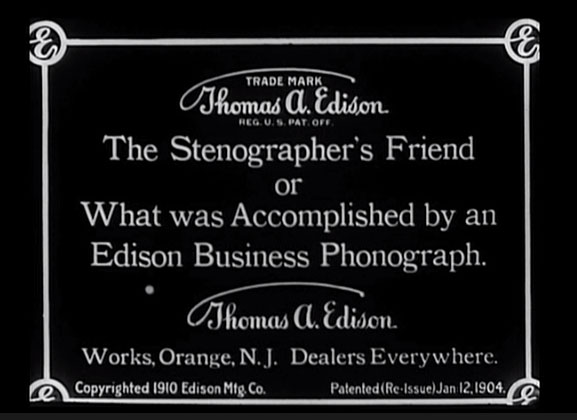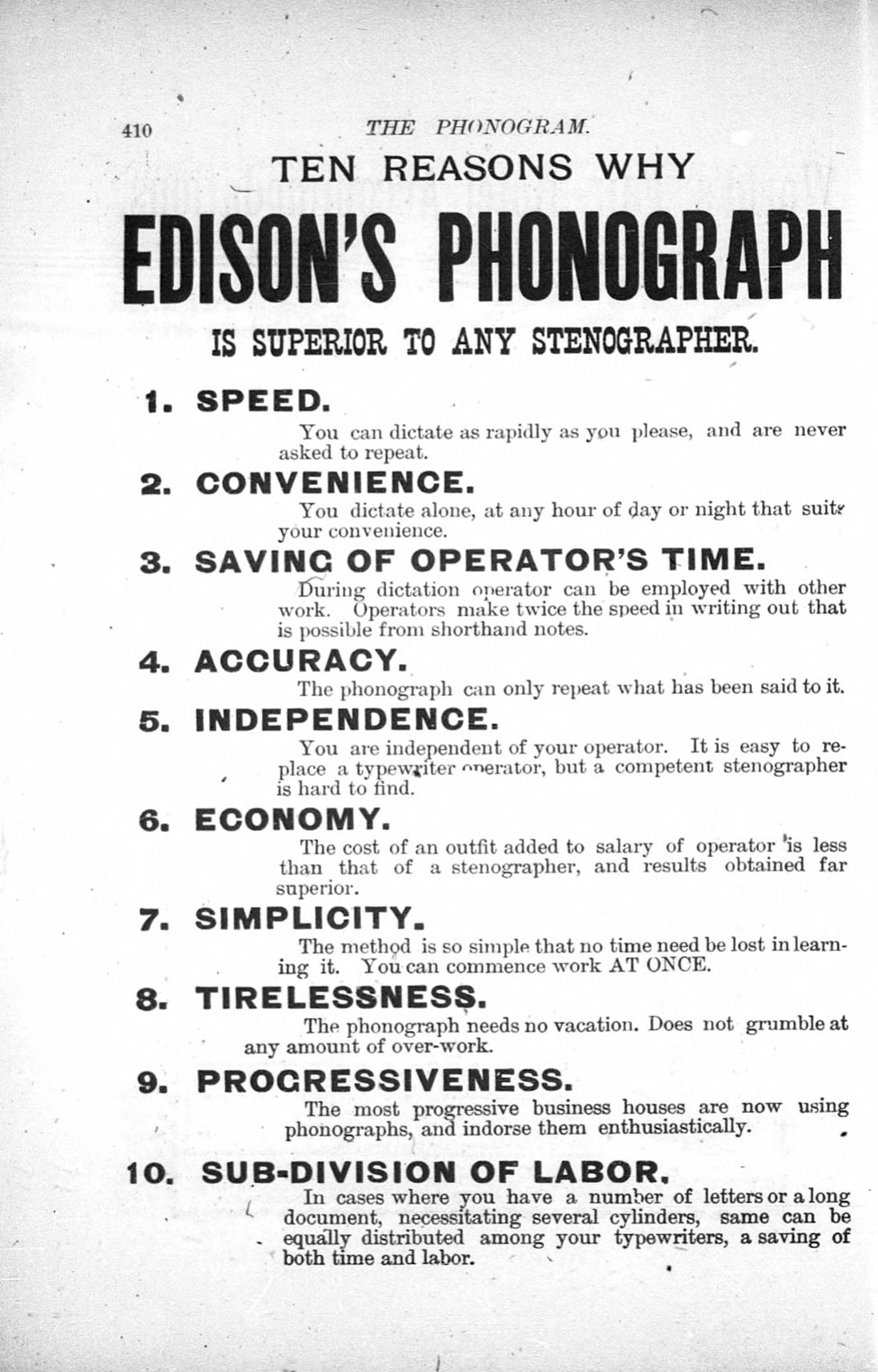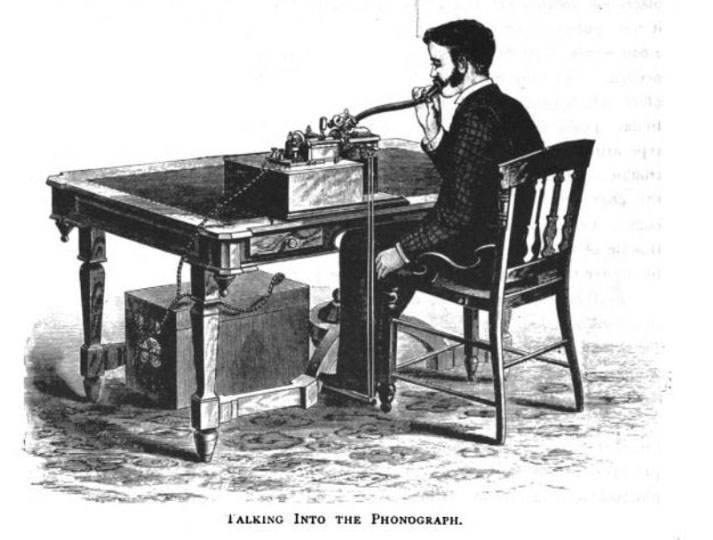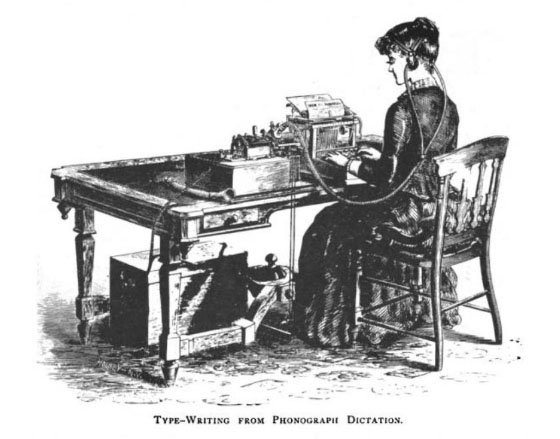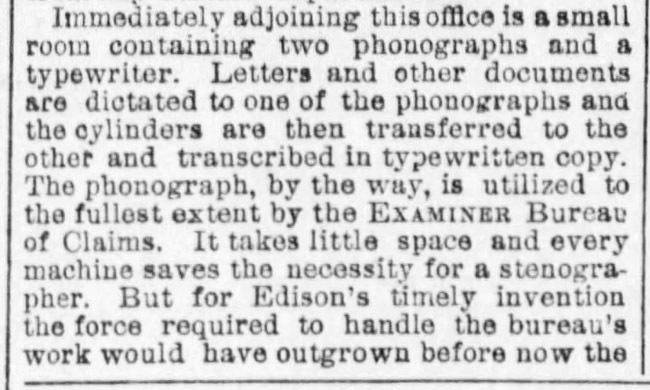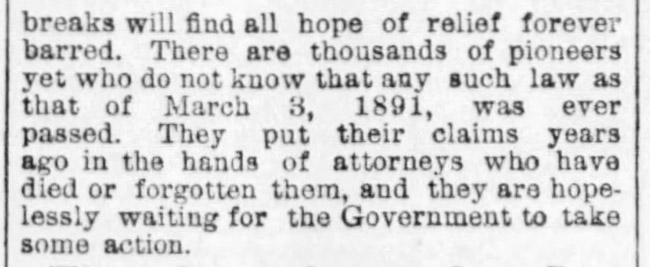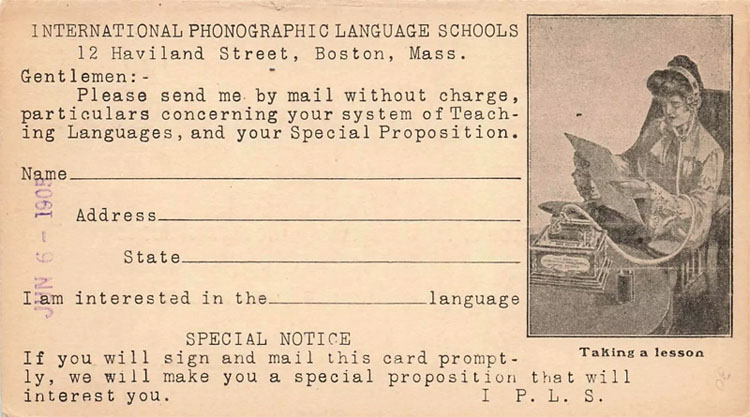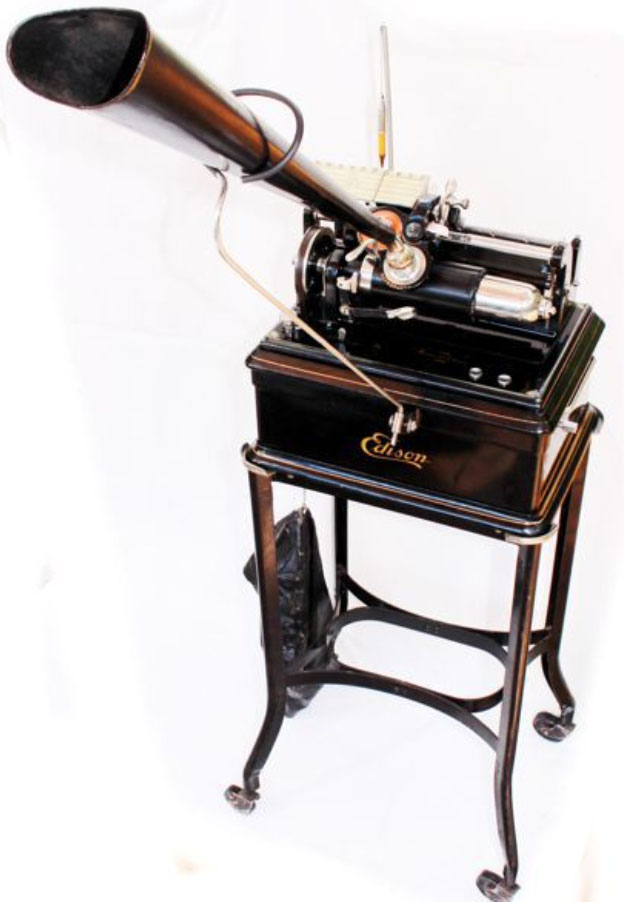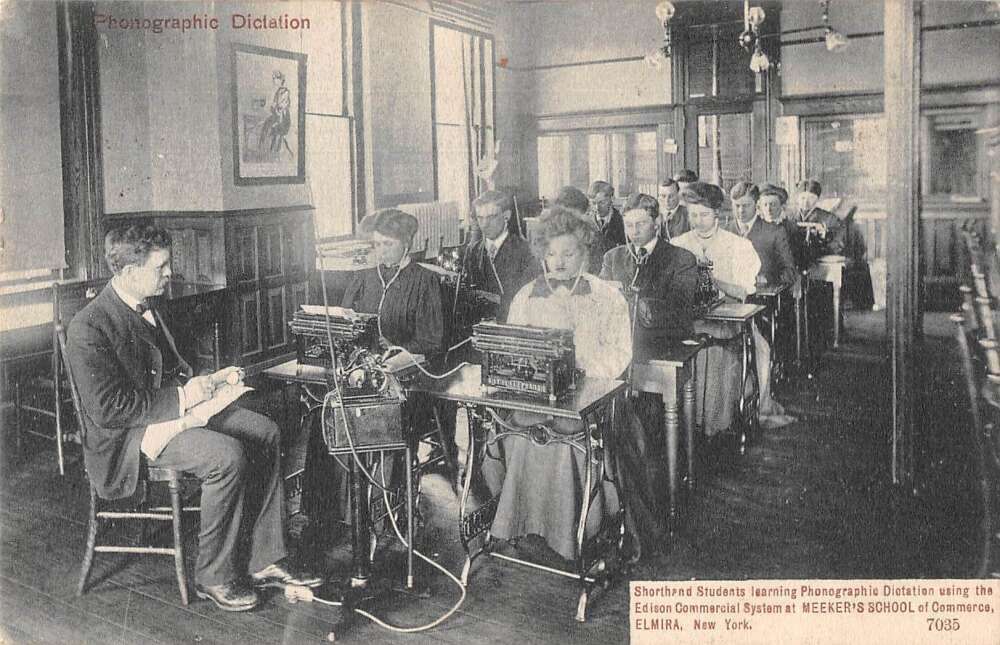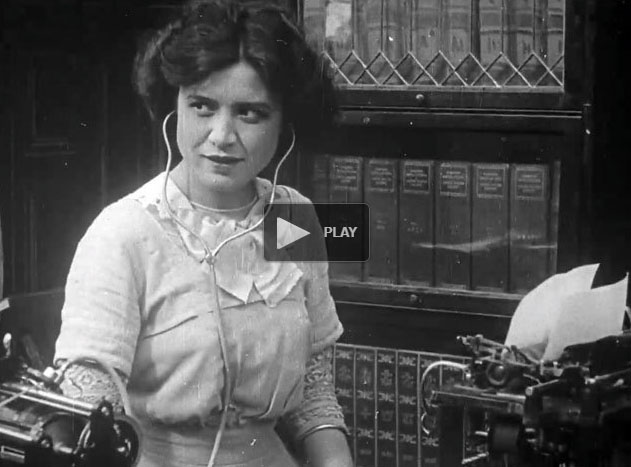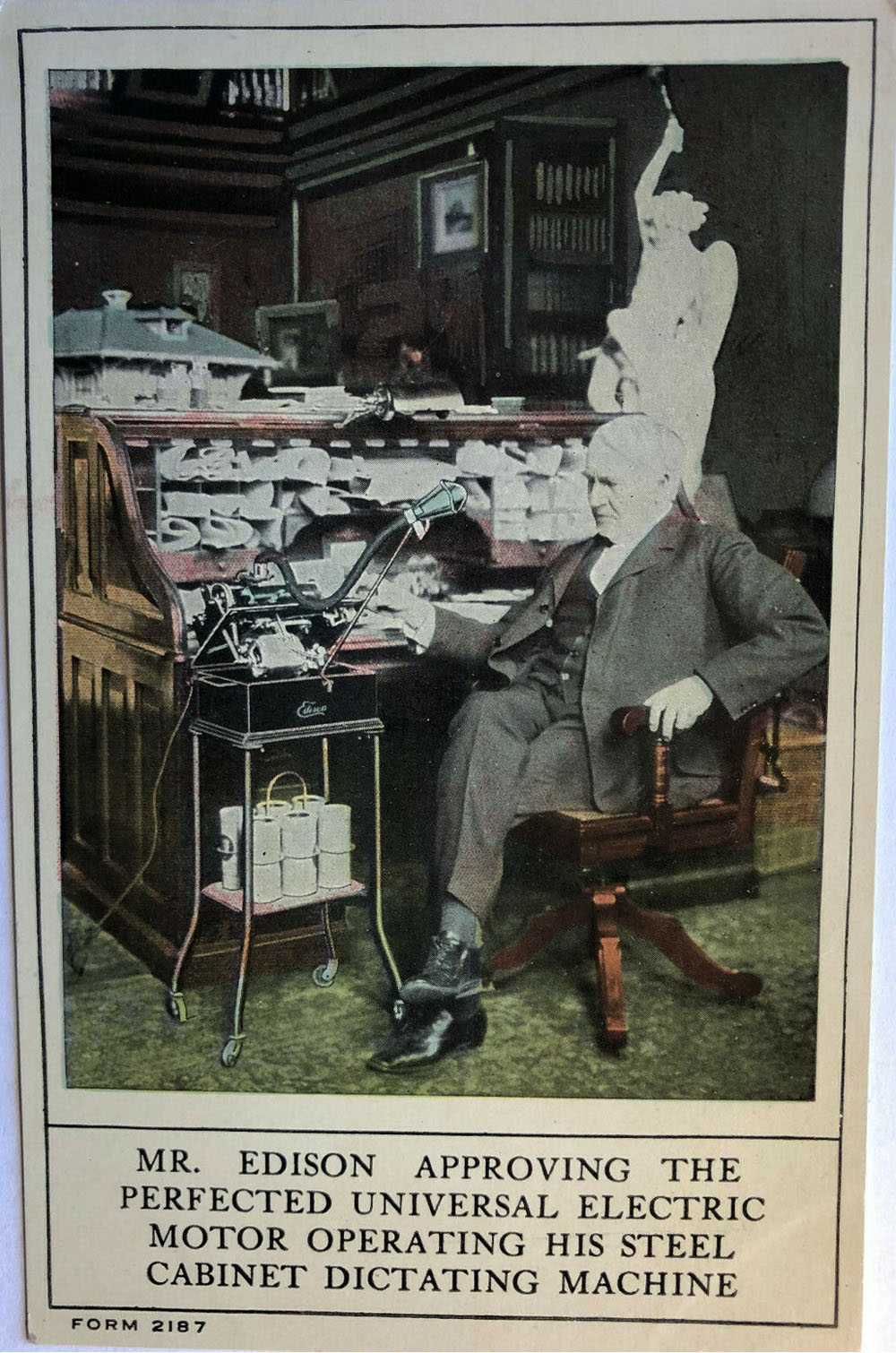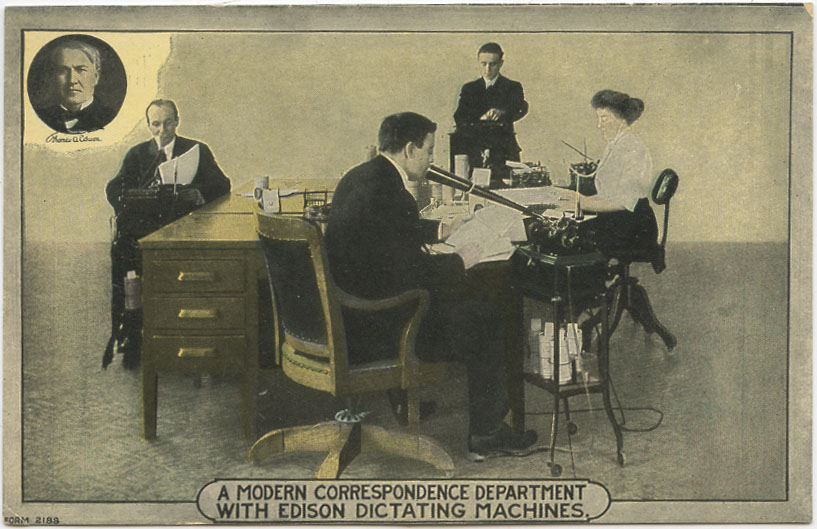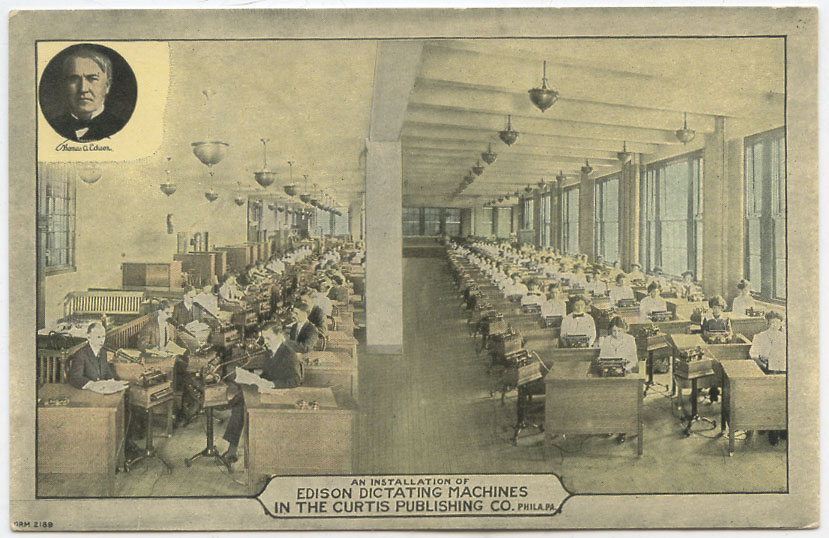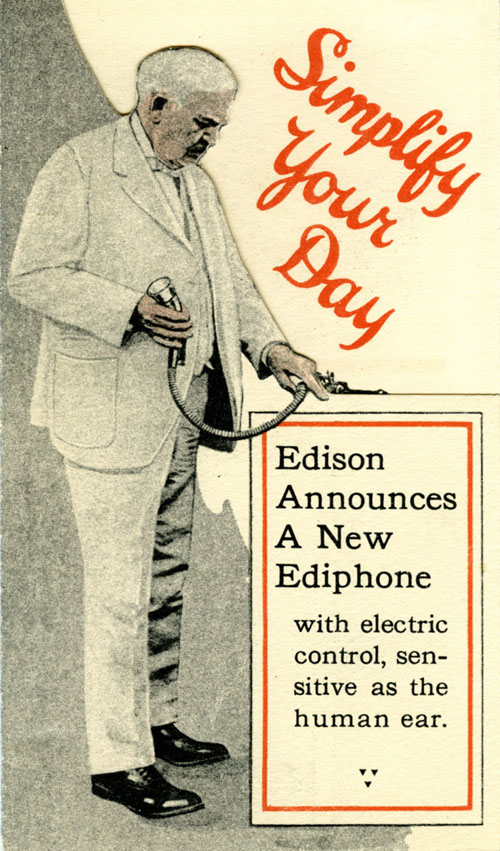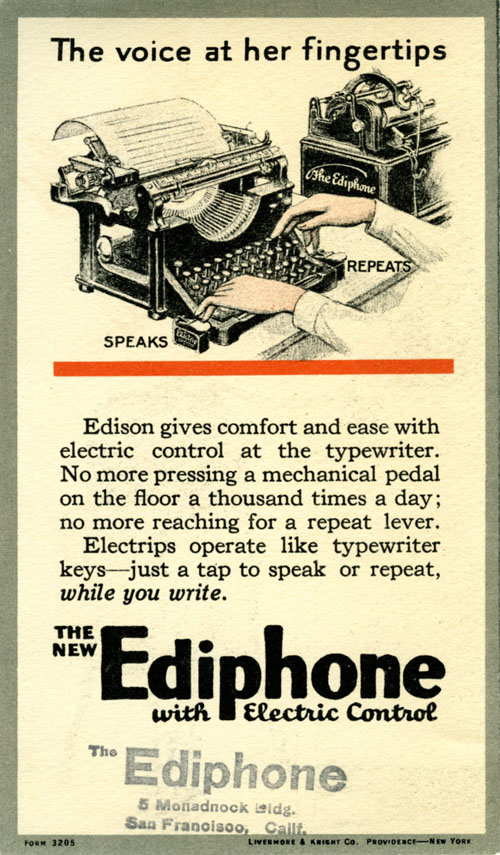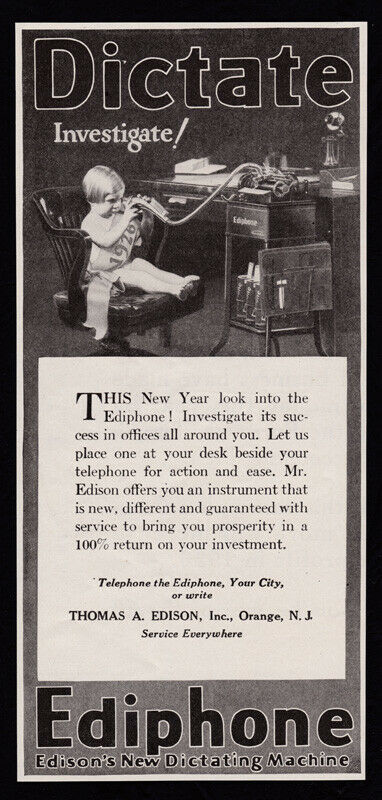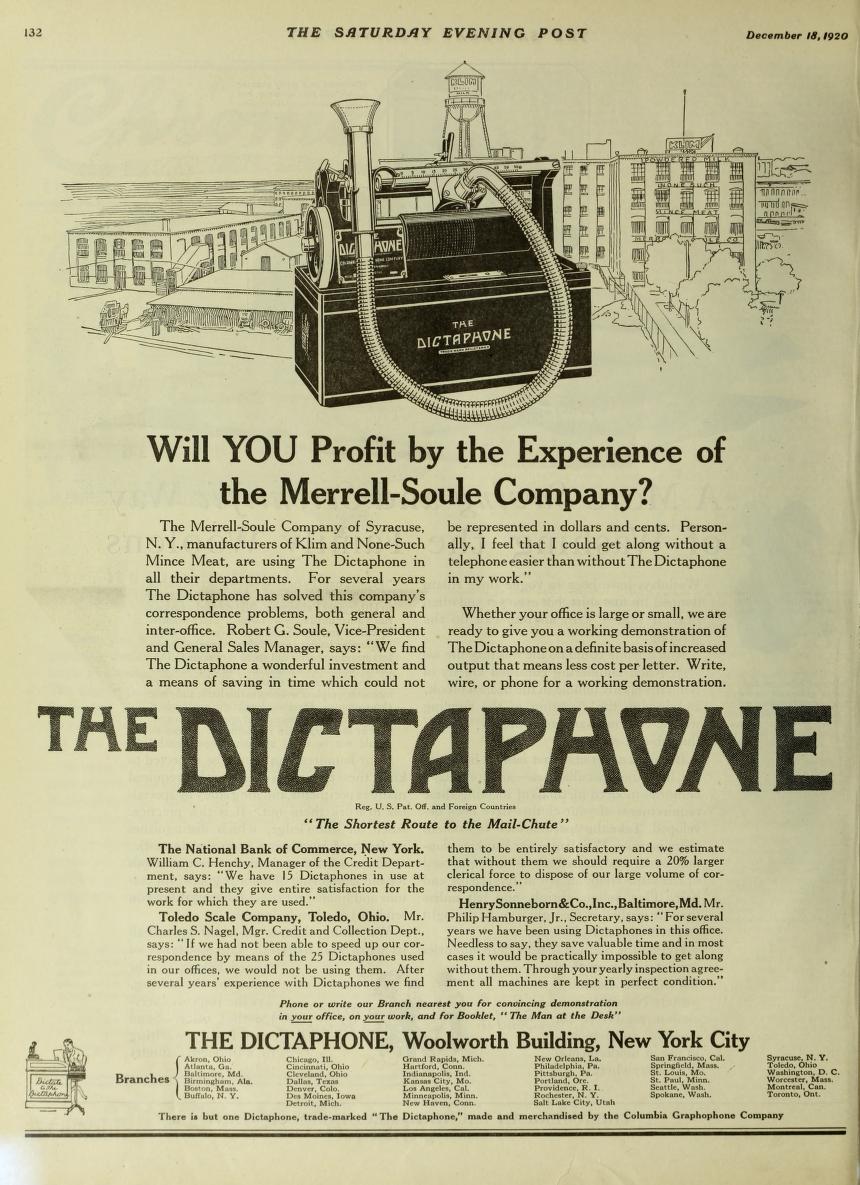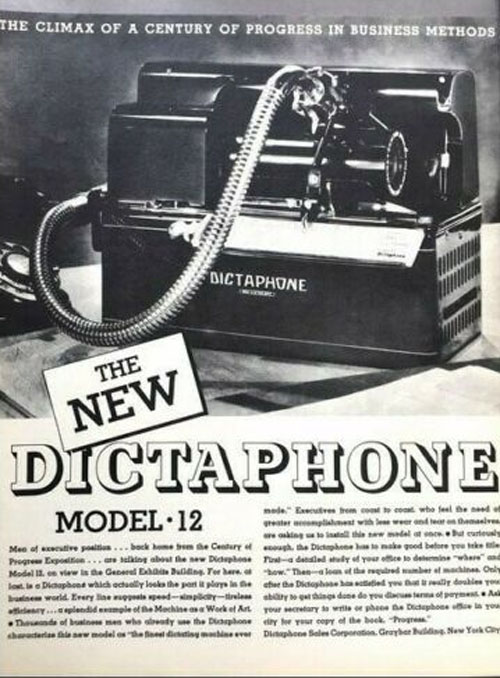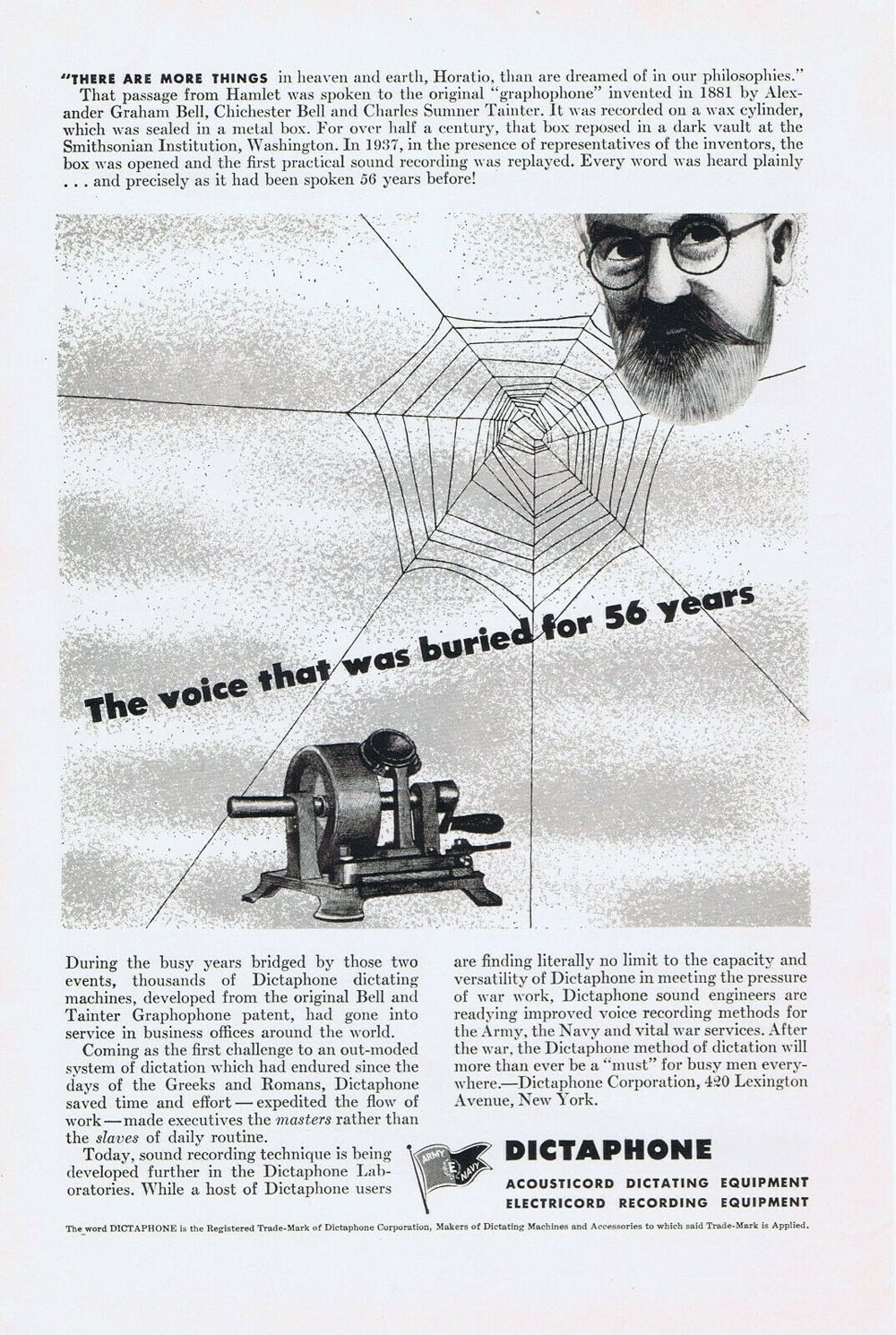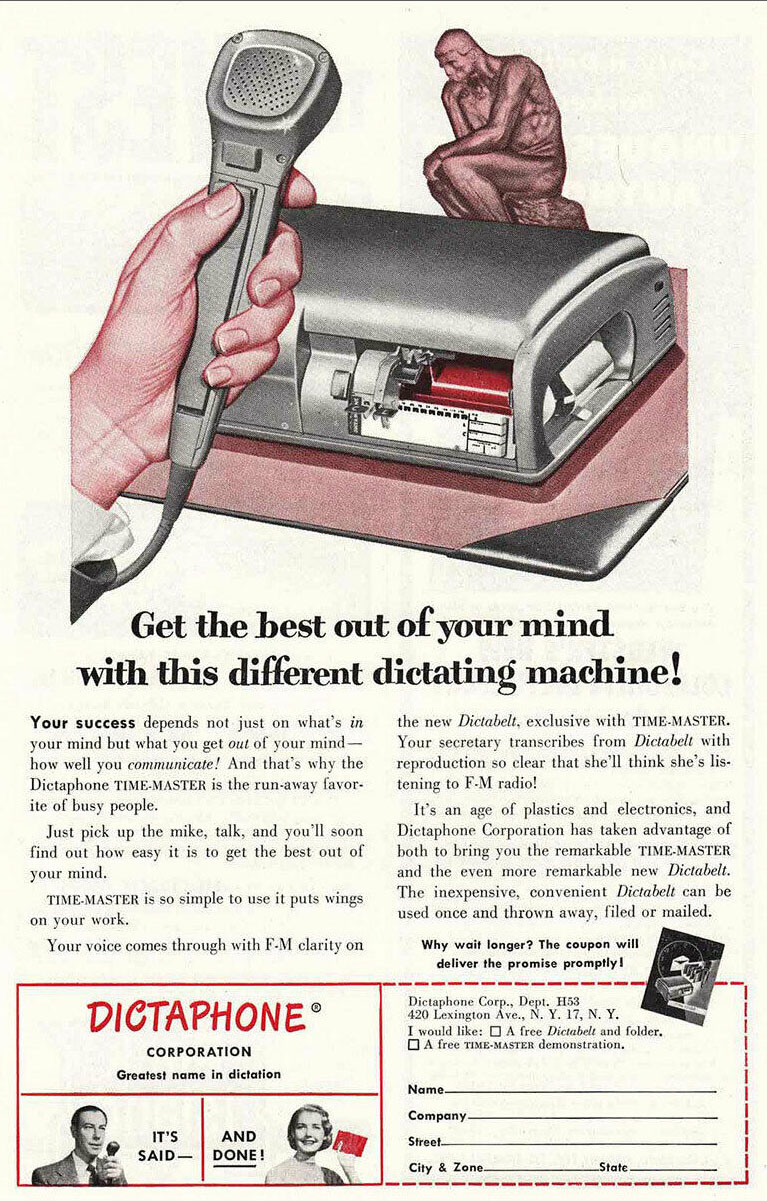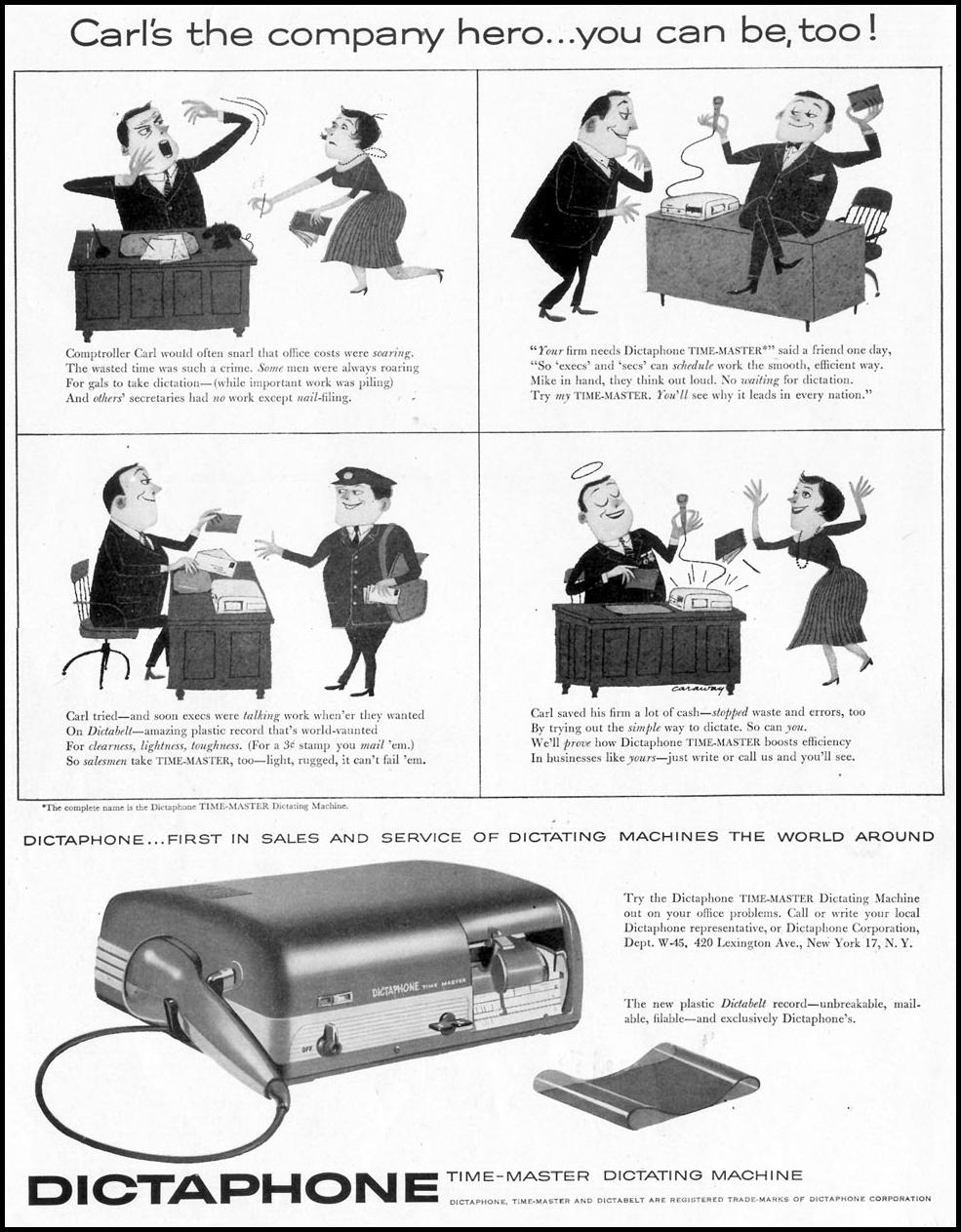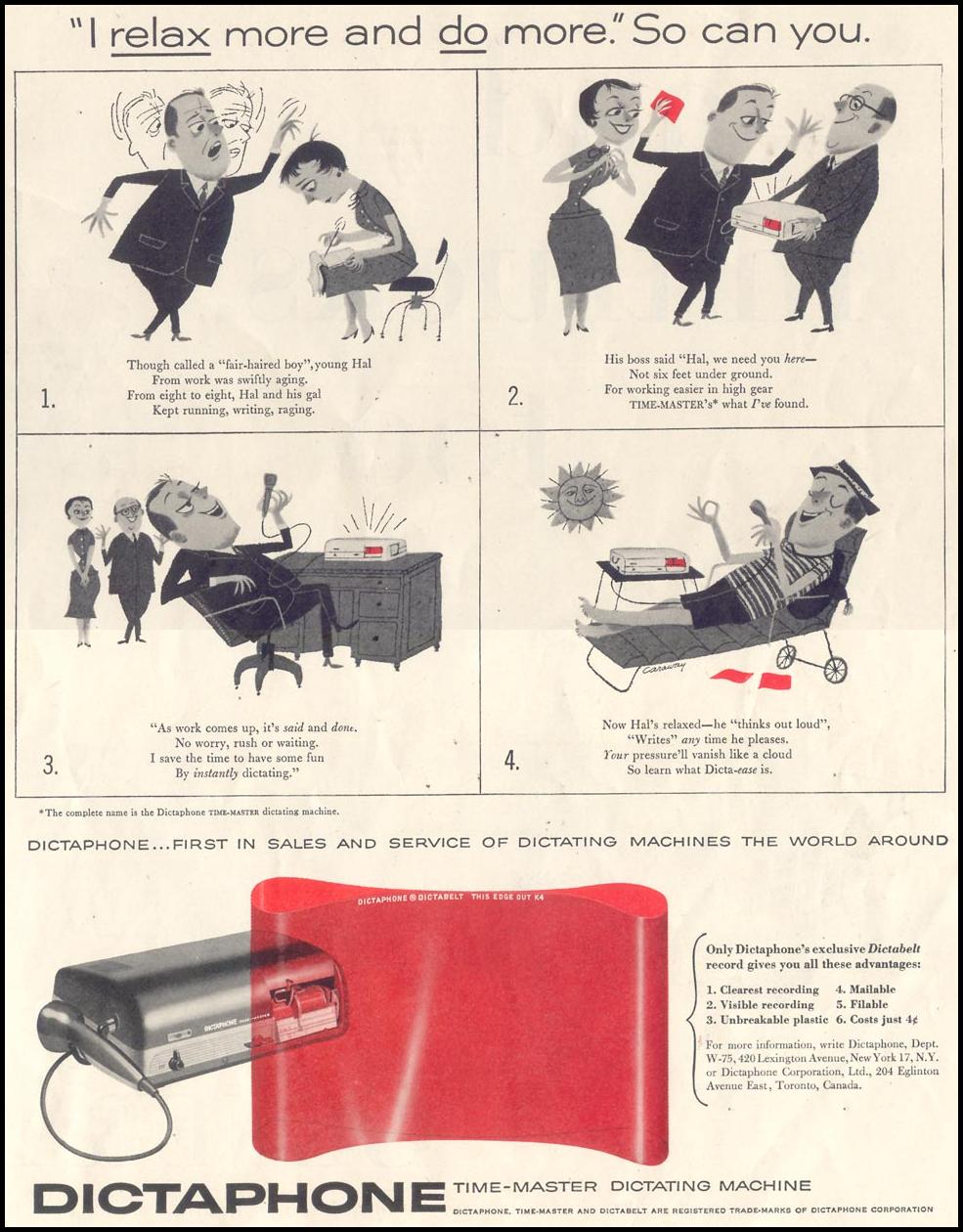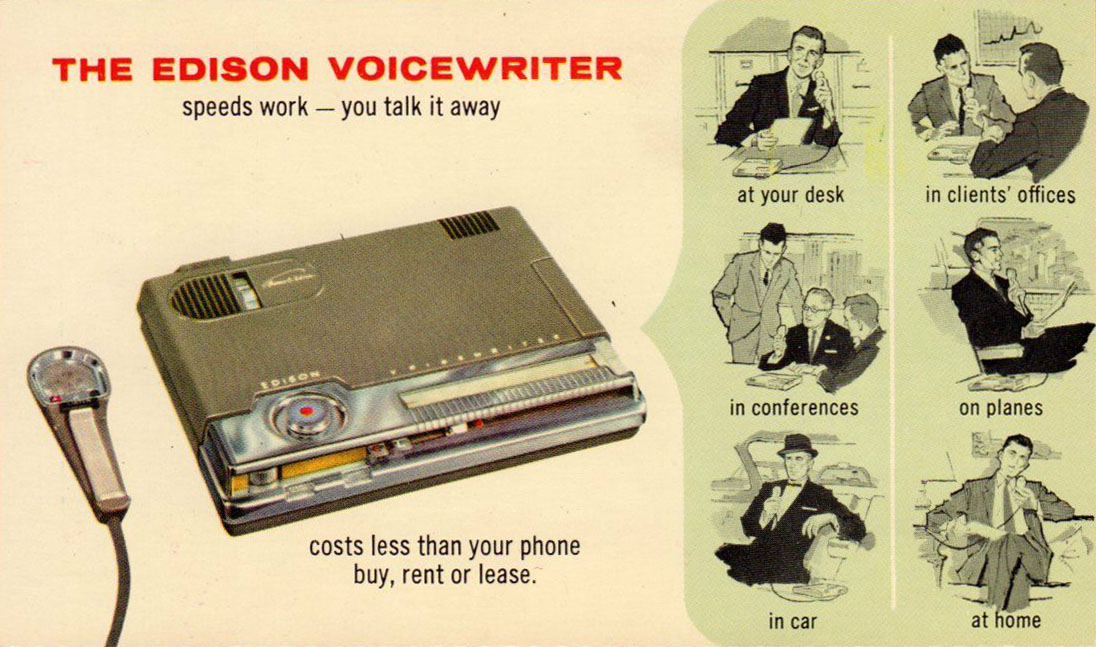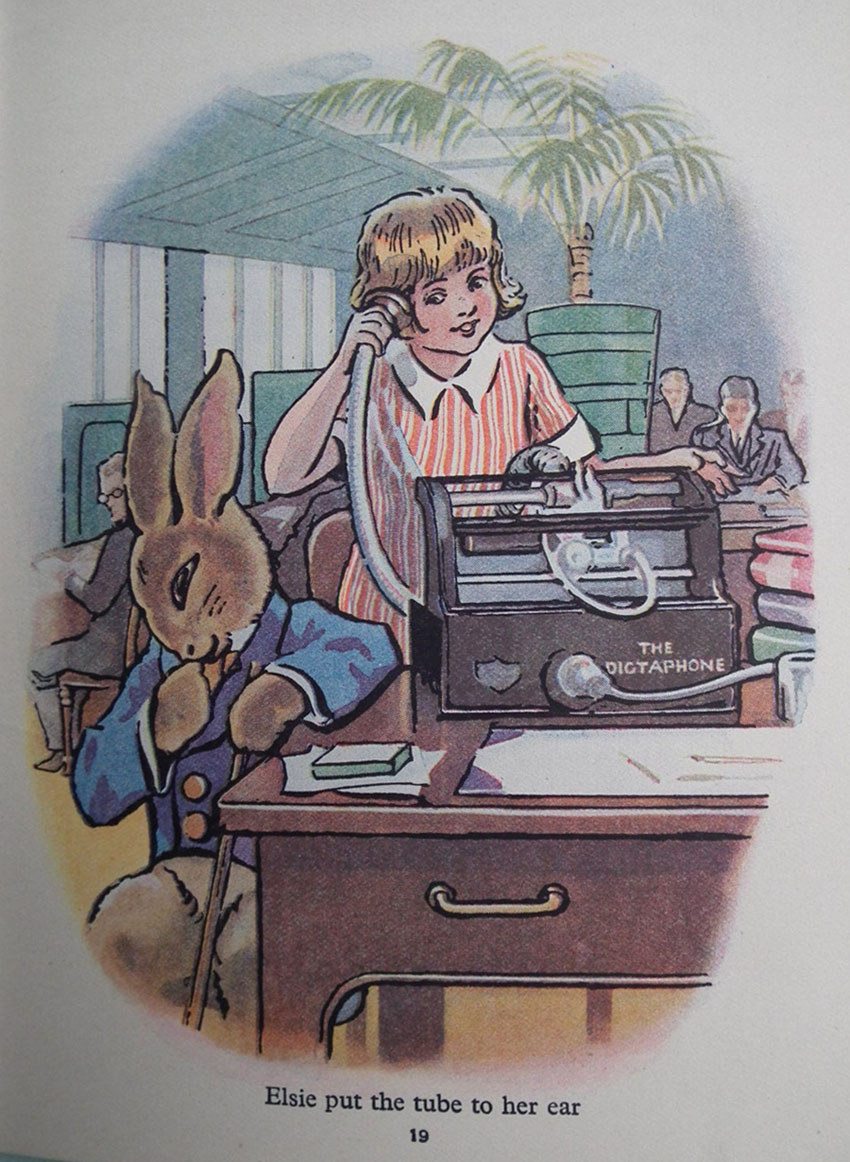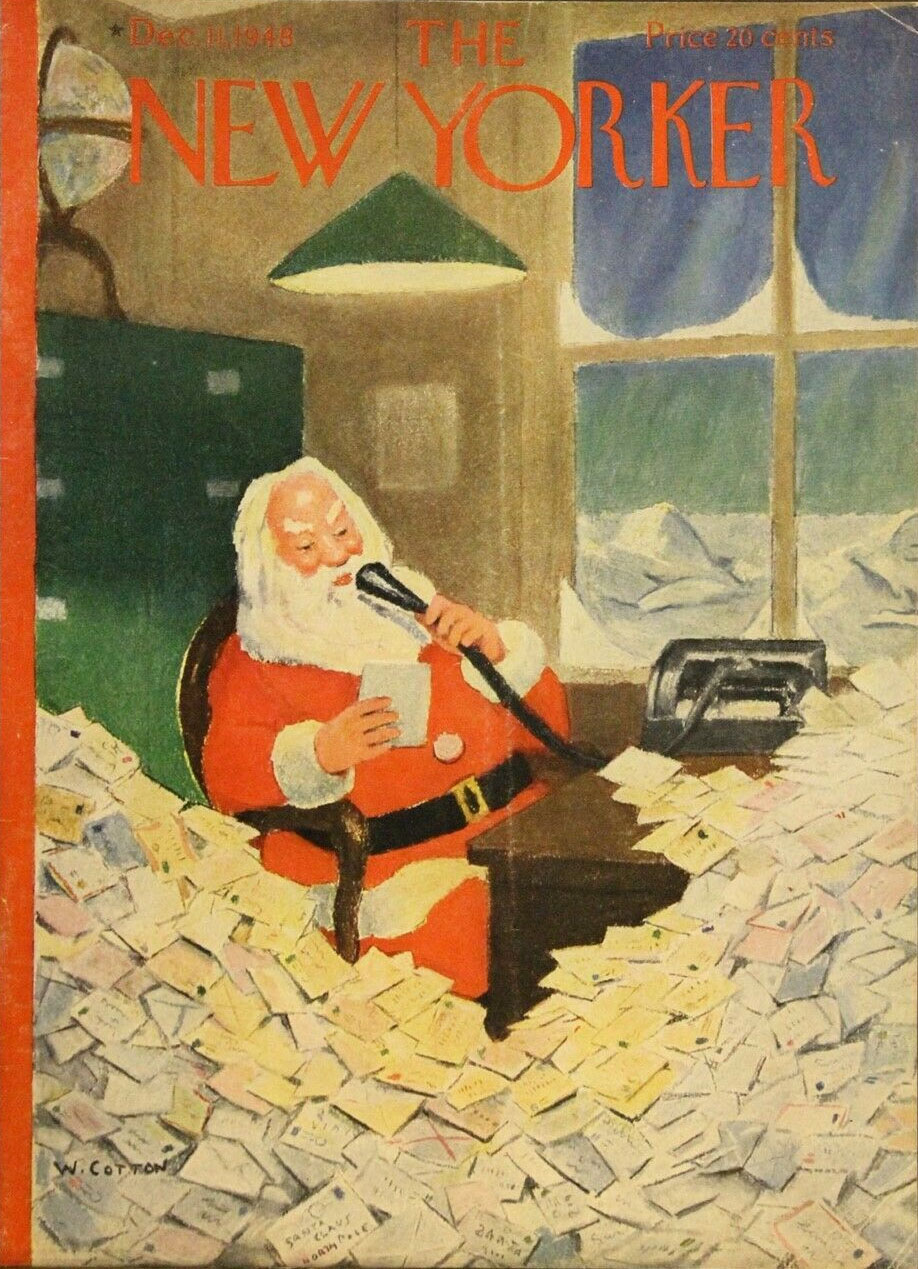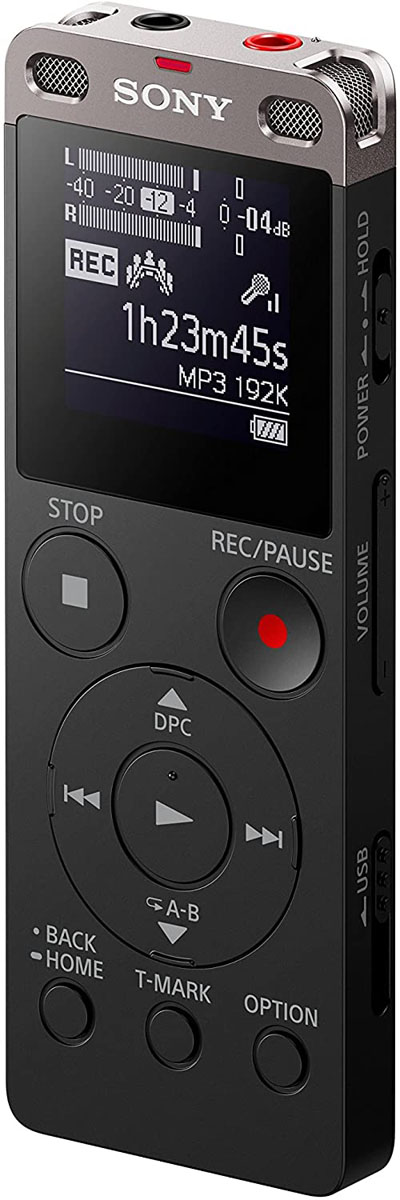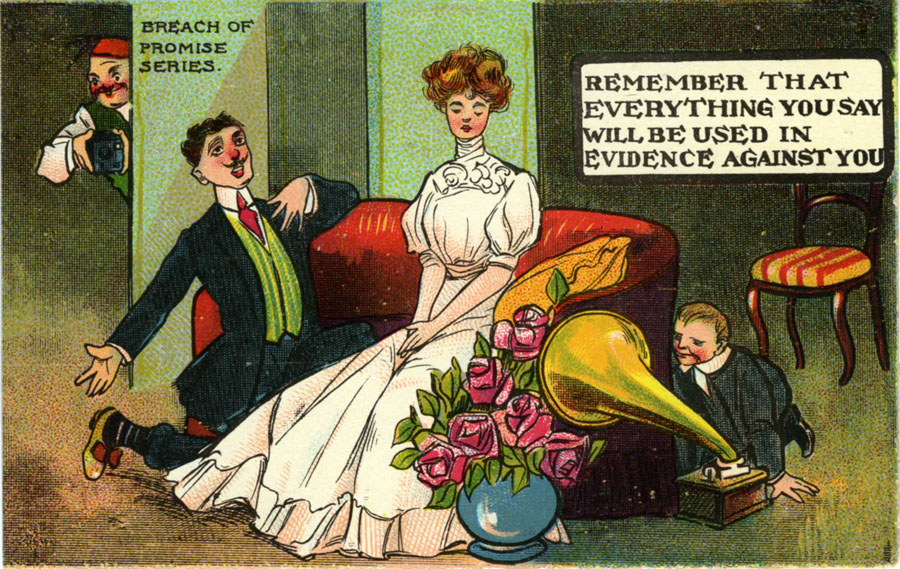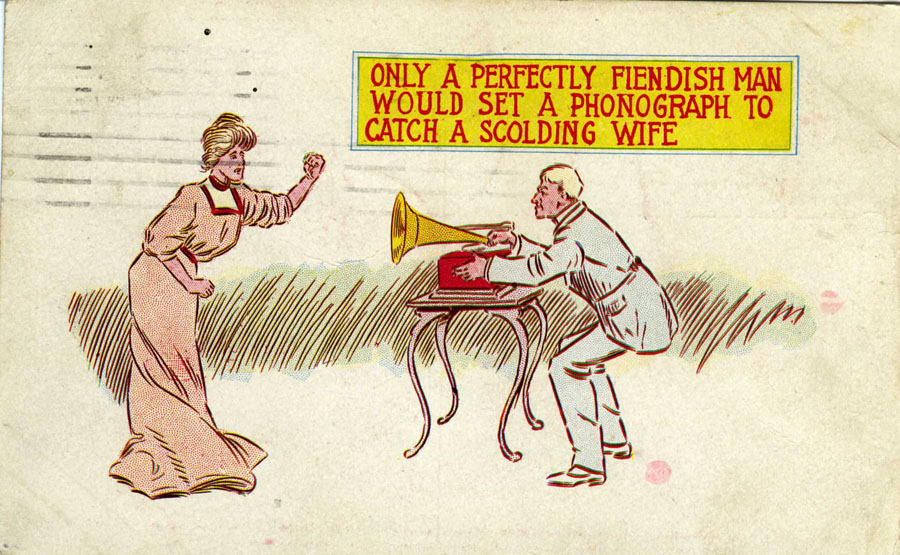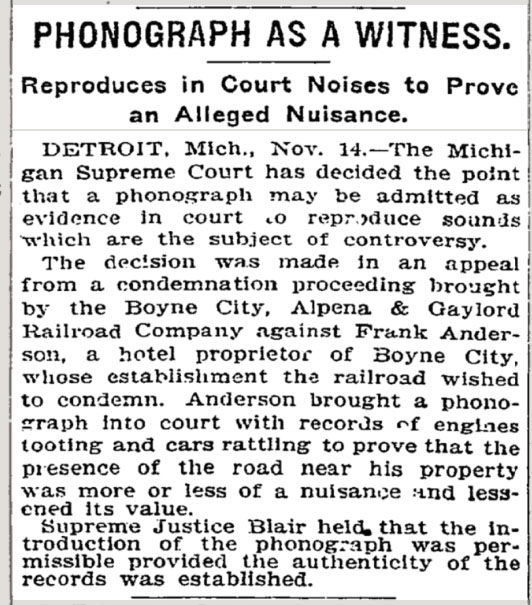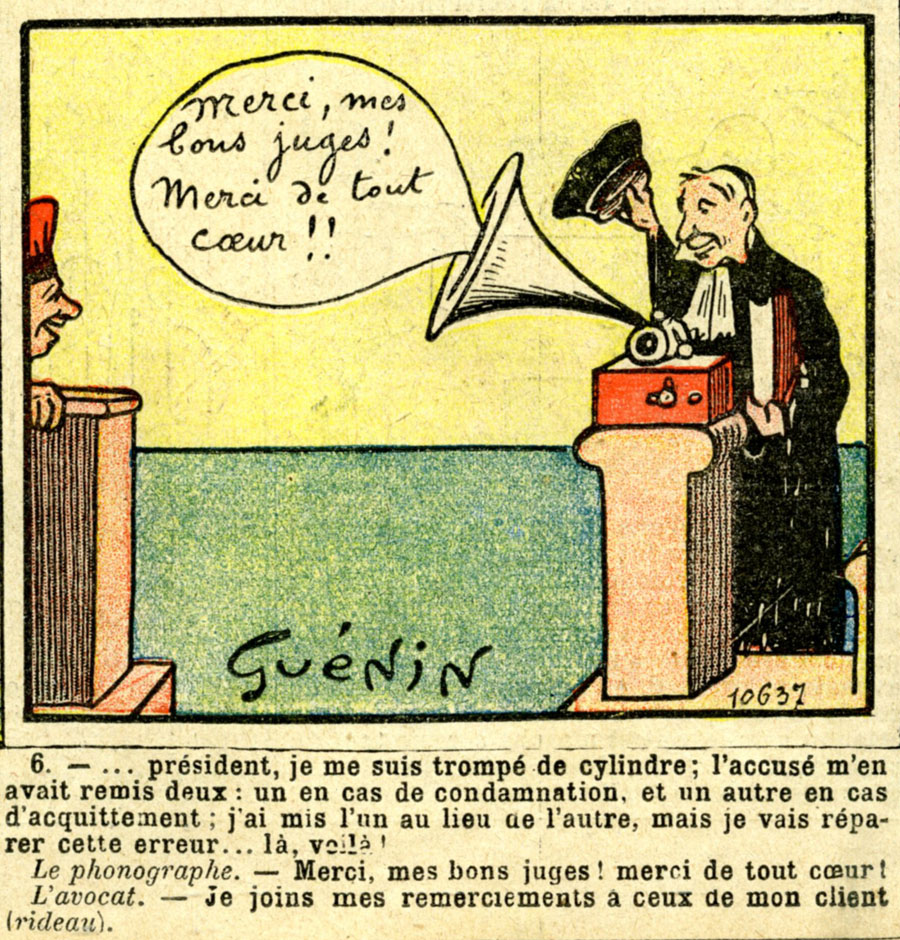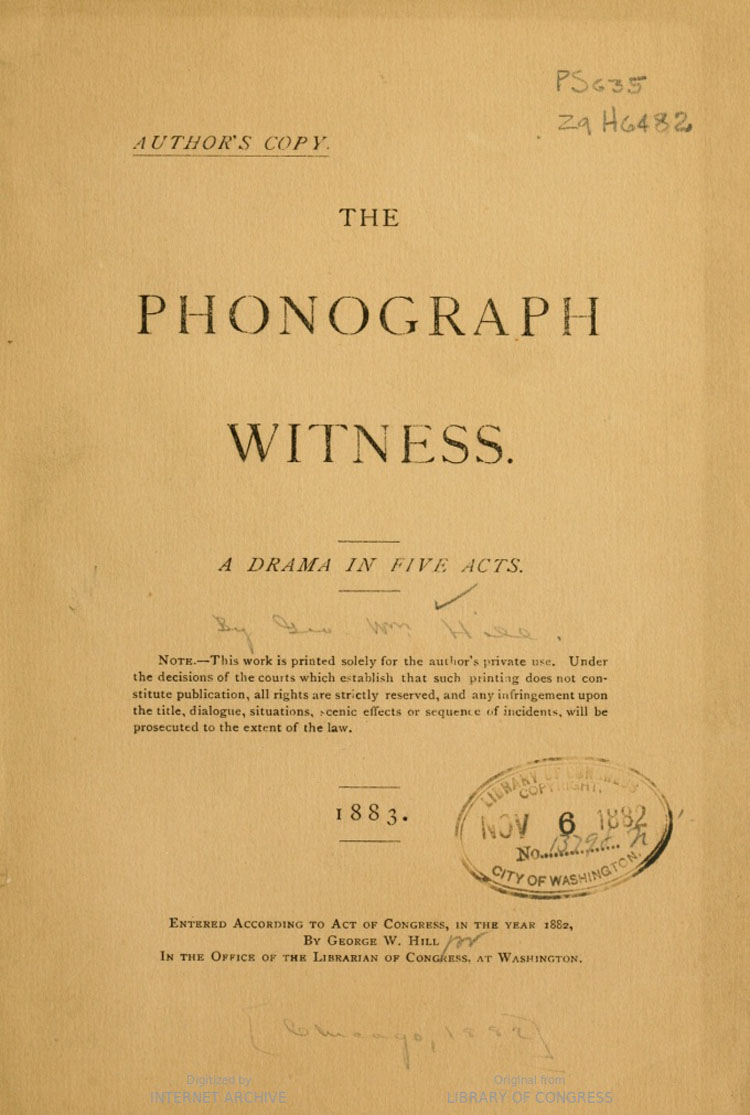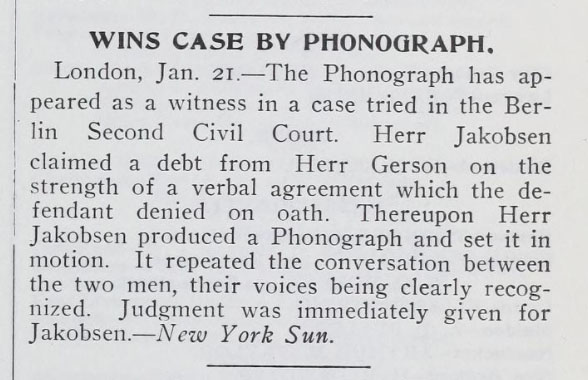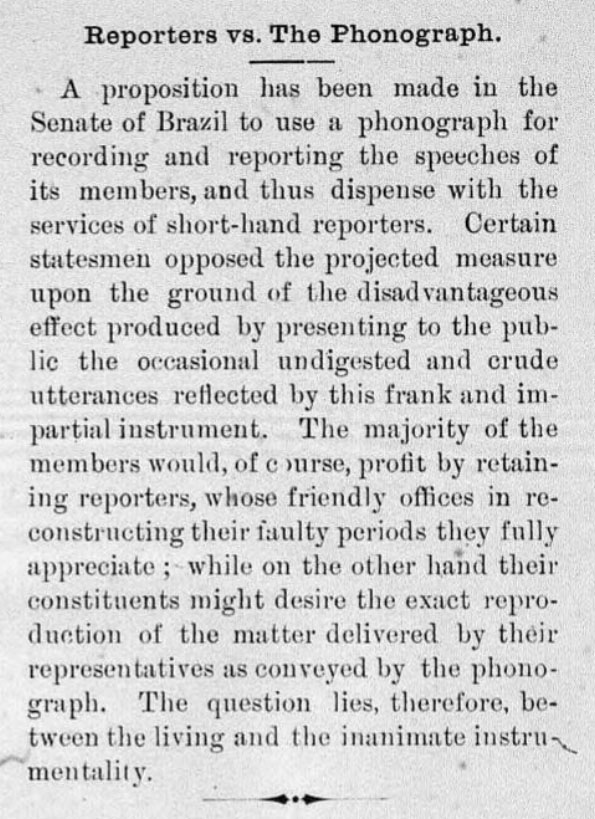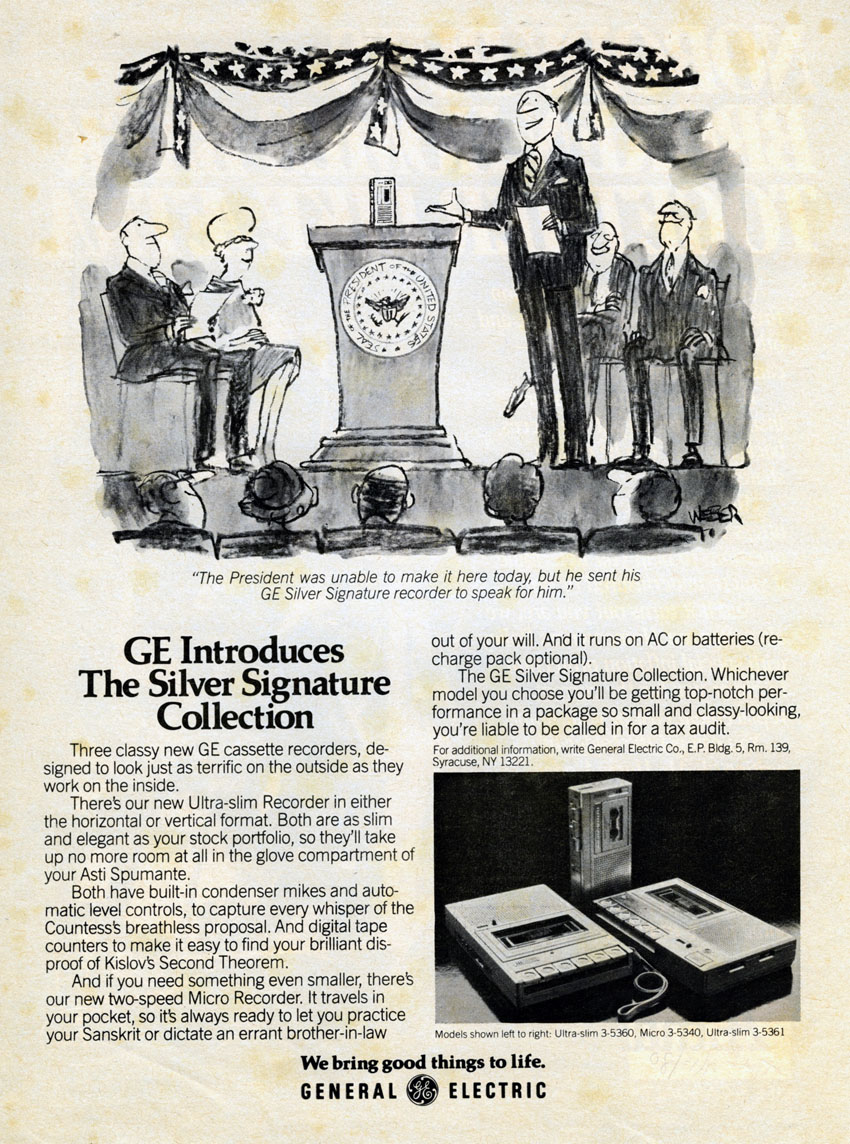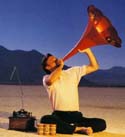The Phonograph and Its Future
Probability: Dictation
.
Dictation.-- All kinds and manner of dictation which will permit of the application of the mouth of the speaker to the mouth-piece of the phonograph may be as readily effected by the phonograph as in the case of letters. If the matter is for the printer, he would much prefer, in setting it up in type, to use his ears in lieu of his eyes. He has other use for them. It would be even worth while to compel witnesses in court to speak directly into the phonograph, in order to thus obtain an unimpeachable record of their testimony. The increased delicacy of the phonograph, which is in the near future, will enlarge this field rapidly. It may then include all the sayings of not only the witness, but the judge and the counsel. It will then also comprehend the utterances of public speakers..
The Phonogram, March-April 1893
.."EDISON PERFECTED PHONOGRAPH", Harper's Weekly June 1888.
The first example identified about the phonograph's future in San Francisco's The Daily Examiner's February 24, 1889 article "Talking Machines - What They Are to Do in the Great Future" is dictation and its assistance to letter-writing: "As a saving in the time given up to writing the Phonograph promises to far outstrip the typewriter." The article then continues to predict the phonograph will replace newspapers delivered as phonograms in which music critics will be able to provide "whole arias from any opera or movements from a symphony by way of proof or illustration."
An article three years later in the Weekly Examiner's March 24, 1892 edition provided evidence that the phonograph was a dictating machine reality in the modern office with a full description of how the office of the "Examiner Bureau of Claims" in Washington, D.C. implemented a "Model Arrangement of Offices -- Electricity, the Phonograph, and All Modern Aids" for use in the Bureau.
The Weekly Examiner, San Francisco, March 24, 1892 p.1 - An Edison Class M Phonograph is sitting on the left desk.
"letters are transcribed from a phonograph by a typewriter..."
The Weekly Examiner, San Francisco, March 24, 1892 p.1
Columbia Phonograph Company Commercial Graphophone, Harper's Magazine, June, 1902
Display at the Office Appliance and Business Systems Show at the Coliseum, Chicago, March 17-24, 1906. The Talking Machine World, April 1906
"Taking a lesson" mailer postcard, International Phonographic Language Schools, Boston, stamped June 6, 1906.
.
Edison Business Machine, 1912 (Courtesy of Radio-Antiks)
Meeker's School of Commerce, Phonographic Dication, 1907 postcard
The Stenographer’s Friend (1910)
Film Notes: The Stenographer’s Friend; or, What Was Accomplished by an Edison Business Phonograph (1910) Sponsor/Production Co.: Edison Mfg. Co. Cast: John Cumpson. Transfer Note: Copied at 18 frames per second from a 35mm print preserved by the Library of Congress (Edison Collection). Running Time: 8 minutes.The Stenographer’s Friend; or, What Was Accomplished by an Edison Business Phonograph successfully incorporates product demonstration into a light comic fable about how productivity and office politics improve with the introduction of the Edison company’s wax-cylinder dictating machine.
When he invented the phonograph in the 1870s, Edison and others assumed that the machine’s ultimate value would be for business. By the 1890s, it was praised as “a stenographer which will take with unfailing accuracy from the most rapid dictation, which never goes out to ‘see a man,’ which is ready for work at any hour of the day,…which is never dissatisfied, sick or ‘looking for a raise.’” One problem the machine faced (beyond complaints of its complexity and proclivity to breaking down) was the flip side to this praise.
The opening topic for discussion at the first National Phonograph Association Convention in 1890 was how to overcome opposition to the phonograph from stenographers who feared unemployment, the same sort of opposition that had greeted the introduction of the typewriter. By the time of The Stenographer’s Friend in 1910, Edison’s business phonograph had at long last become a successful product, and the film answers such fears through a little before-and-after drama. Our female stenographer breaks into tears at her long hours until the arrival of her “friend” the phonograph and the miraculous time-saving improvements brought by the ease of transcribing dictation through it. Now with “everybody happy,” the entire office staff bows down to Edison’s jaunty, straw-hatted salesman.—Scott Simmon (Courtesy of the Library of Congress and The National Film Preservation Society
This photograph is one half of the Stereoview card from a series showing Sears, Roebuck & Co., various departments, this one being the Stenographic Department circa 1906. On the back of the card it states that "In this room between 150 and 200 young women transcribe letters dictated from a graphophone."
Dictation Machine Adevertising
Edison advertising postcard, Form 2187
Edison advertising postcard, Form 2188
Edison advertising postcard, Form 2189
Edison Form 3205 c.1920 (PM-1223)
Ediphone 1926
The Dictaphone, The Saturday Evening Post December 18, 1920
Dictaphone, 1933
Dictaphone, 1943
Dictaphone, 1953
April 9, 1955 Saturday Evening Post, Illustrated by James Lee Caraway, Jr.
June 4, 1955 Saturday Evening Post, Illustrated by James Lee Caraway, Jr.
July 23, 1955 Saturday Evening Post, Illustrated by James Lee Caraway, Jr.
Edison Voicewriter advertising postcard, 1958
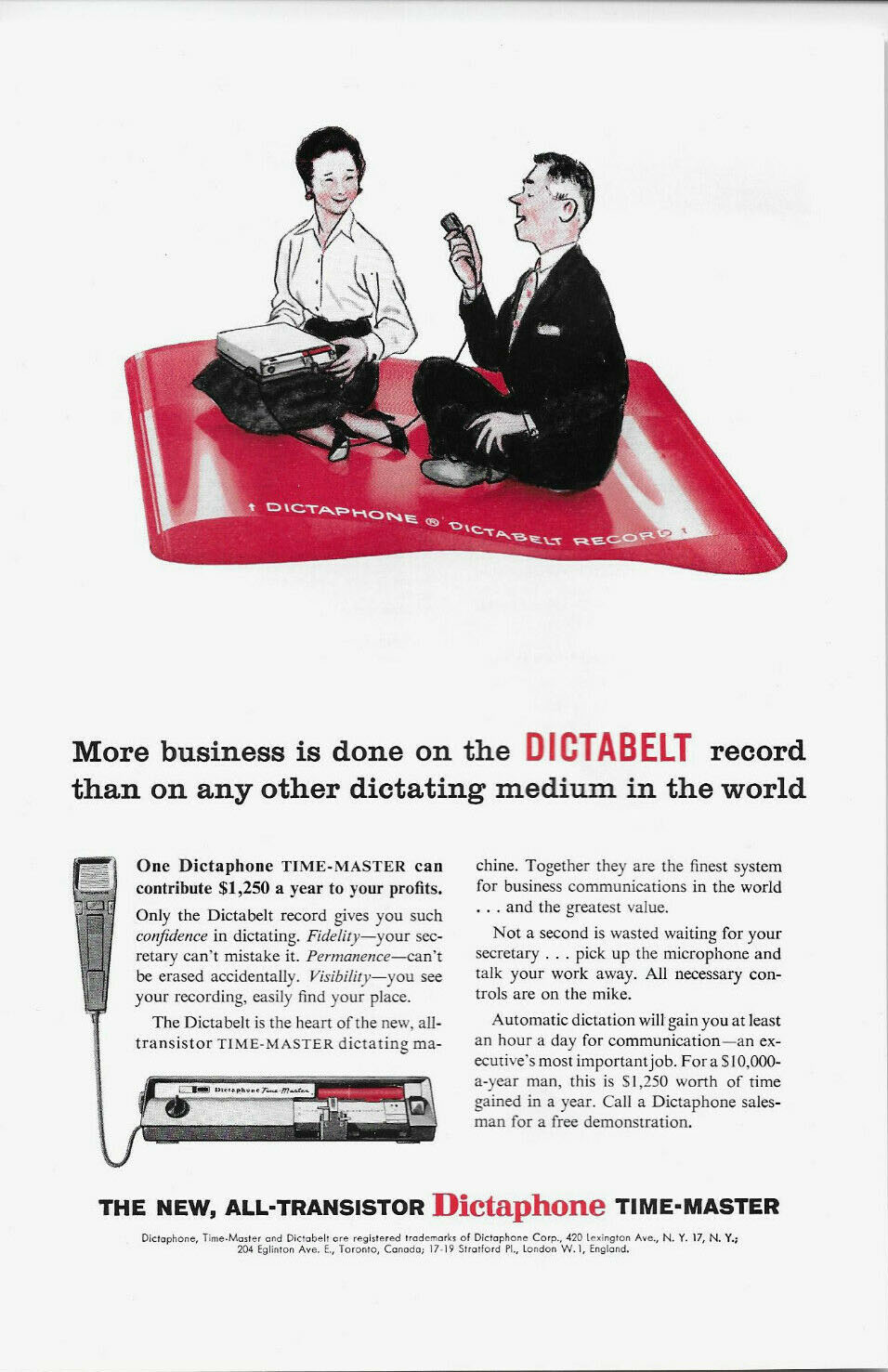
Dictaphone, 1959
Dictation Machine in Popular Culture
Another Adventure of Elsie and the Bunny, Cadbury Ltd, c.1920's (The Bournville Bunny - visiting the Cadbury Chocolate factory)
Santa with Dictaphone on The New Yorker cover, December 11, 1948
Henry Martin, Punch magazine, December 1981
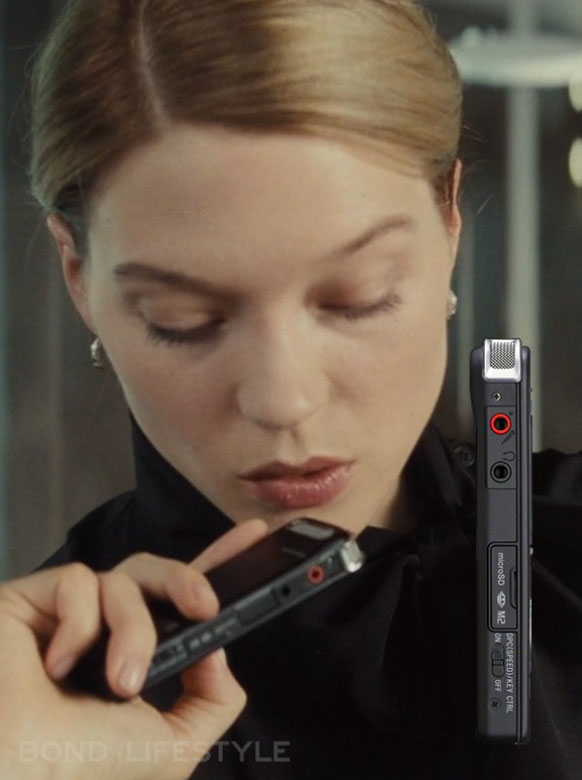 Madeleine Swann (Léa Seydoux) uses a Sony ICD-SX1000 16GB Voice Recorder in the movie SPECTRE (2015). Swann is talking into the recorder when James Bond (Daniel Craig) enters her office at the Hoffler Klinik.As part of the "Dictation" probability, Edison also explained how the phonograph would be an invaluable addition to the legal system for recording testimonies and would provide an unimpeachable record of the proceedings:It would be even worth while to compel witnesses in court to speak directly into the phonograph, in order to thus obtain an unimpeachable record of their testimony. The increased delicacy of the phonograph, which is in the near future, will enlarge this field rapidly. It may then include all the sayings of not only the witness, but the judge and the counsel.
Madeleine Swann (Léa Seydoux) uses a Sony ICD-SX1000 16GB Voice Recorder in the movie SPECTRE (2015). Swann is talking into the recorder when James Bond (Daniel Craig) enters her office at the Hoffler Klinik.As part of the "Dictation" probability, Edison also explained how the phonograph would be an invaluable addition to the legal system for recording testimonies and would provide an unimpeachable record of the proceedings:It would be even worth while to compel witnesses in court to speak directly into the phonograph, in order to thus obtain an unimpeachable record of their testimony. The increased delicacy of the phonograph, which is in the near future, will enlarge this field rapidly. It may then include all the sayings of not only the witness, but the judge and the counsel.
This 1908 postcard shows a marriage proposal being recorded as potential evidence for enforcing a promise. Note that the father in the background is also taking a photograph to document this event. This image also reinforces Edison's statement that "The Phonograph can captivate “sounds, with or without the knowledge or consent of the source …” Thomas Edison, “The Phonograph and its Future”, 1878.
This cartoon from a 1908 postcard shows how recorded words from a domestic discussion can potentially be used as 'evidence' of a conversation. Note: "Set a Phonograph" means to place the needle on a record so that it will record what is said.My personal favorite popular culture example of the phonograph being used in a court case is from the 1901 Musical Comedy "The Head Waiters." Pictured in the sheet music (below) are the Boss and Susan, his typist, during their courtship and out for dinner. One of the songs from this musical is titled "Susan, Dear Sue (Phonograph Song)" with the boss, who was in love with Susan, saying "“You’re name Susan, won’t do; Link it with mine forever”. Be mine dear from today and I will part from you never.”

The boss, however, breached his promise of marriage and “Susan, dear Susie, did Sue.”Susan's legal case was strong since had made a phonograph record of his wooing which she brought as a witness in the court.
Thanks to the phonograph recording Susie won her case.
Here are the lyrical details of how Susie, not to be trifled with, executed her precautions with a Phonograph:
“Once with a Phonograph near her,
Set to record all that he’d say,
With graces that made him revere her,
She caused him to plead in this way:
Sue, Sue, Susan, dear Sue,
I’m in love dear, with you
You’re name Susan, won’t do;
Link it with mine forever,
Be mine, dear, from today
and I will part from you never.”
The Graphophone "Not a Competent Witness"
Scientific American Supplement No. 632, February 11, 1888, 10097. (Courtesy HathiTrust and University of Michigan)
"THE WINDSOR EVENING RECORD of April 15, 1903 and THE CUMBERLAND NEWS of September 15, 1903 published nearly identical articles about the use of the Bettini Microphonograph in the Gamey Case, hearings in which a politician named R. R. Gamey unsuccessfully claimed that he was bribed to change political parties."
For details about Nelson Butcher, the official court stenographer, and his staff's use of the phonograph in this case read the article in the Canadian Antique Phonograph Society's (CAPS) Antique Phonograph News, Mar-Apr 2015, by Robert Feinstein.
Phonograph recording brought into court to prove the nuisance sounds of "engines tooting and cars rattling" impacting the property value of a hotel. The New York Times, November 15, 1906
"Heavens, Maria! Was that Phonograph open during the cat fight?""No. I turned it on last night when you were sleeping. Perhaps you will believe now that you snore."
Life magazine as reprinted by The Phonogram, February 1901
The Phonograph, as client, responds (after a mix-up of cylinders) to the court's verdict
"Justice Modern Style"
Last of 6 panel cartoon from L'illustré National September 18, 1904 (PM-1798)
6. - ..."President, I got the wrong cylinder; The accused gave me two; one in case of conviction; and another in case of acquittal; I put one instead of the other, but I'm going to fix this error ... here it is."
The Phonograph - "Thank you, my good judges! Thank you very much!"
The Lawyer - "I add my thanks to those of my client."
Always "keep a Phonograph in the room"
Reprinted in The Phonogram, September 1902
For an example of the Phonograph playing a 'canny witness" role in an 1883 drama which features a room called a "Phonographic Chamber" where all sounds heard are recorded by "an accurate though invisible, reporter," read The Phonograph Witness in PhonoBooks.
The Phonograph as "star witness in a lawsuit."
The Phonogram, October 1902
The Edison Phonograph Monthly, February 1905
The Phonograph for Recording Speeches
The Phonogram, January 1892 p.14
The Recorder for Giving a Speech
General Electric Signature Recorder, Time magazine, September 15, 1980
OTHER RECOMMENDED RESOURCES:Visit the Early Office Museum™ for more information and examples about dictation machines and their use in earlier offices. The Early Office Museum "engages in research on the history and evolution of offices, antique office machines and equipment, and business technology based on original documents, artifacts, and vintage photographs." Of special interest for Friends of the Phonograph is their Antique Dictating Machines webpage.
